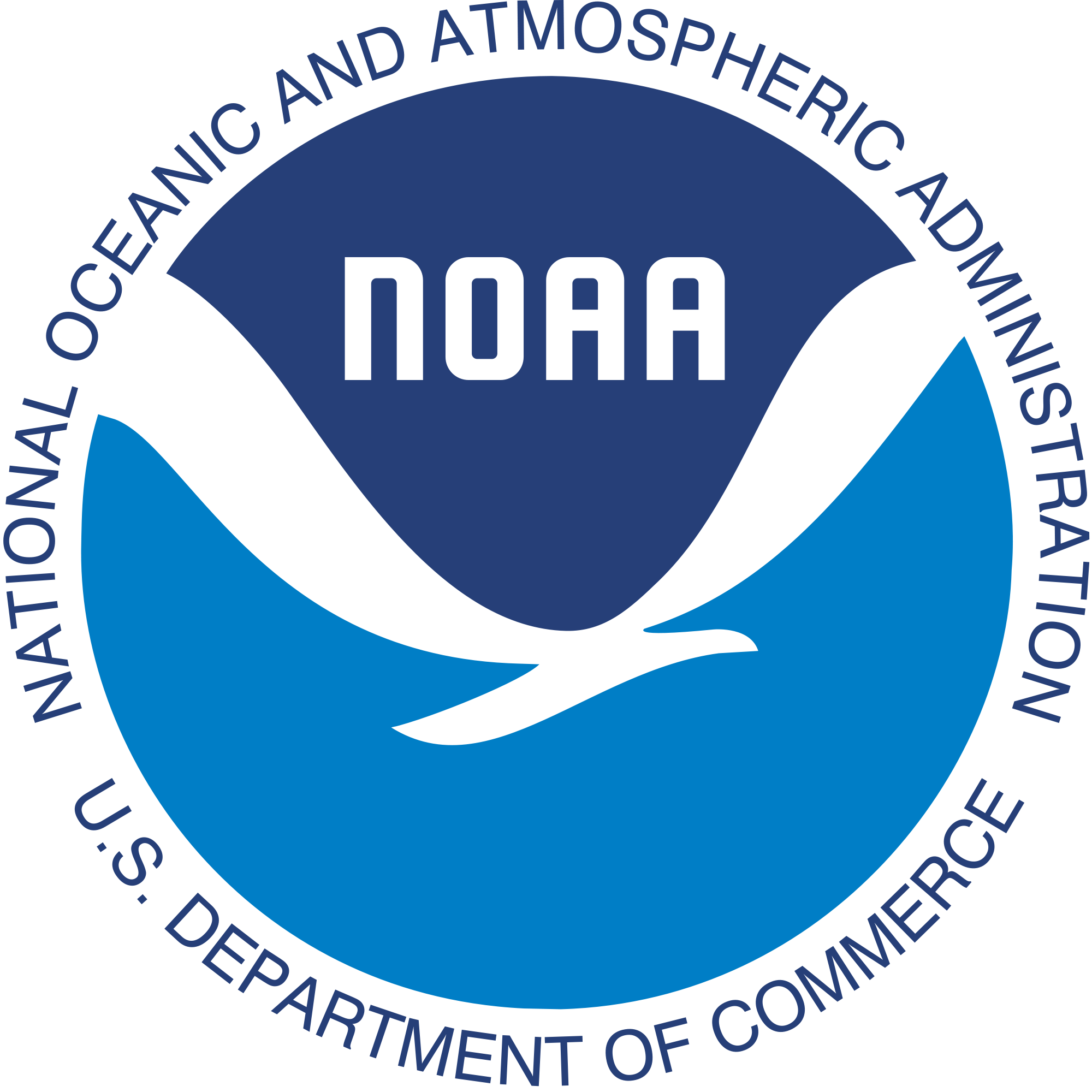
 Environmental Protection Agency ⌨: NOAA's Mission: Science, Service and Stewardship -- 1. To understand and predict changes in climate, weather, oceans and coasts; 2. To share that knowledge and information with others; and 3. To conserve and manage coastal and marine ecosystems and resources.: EPA researches 3 primary areas: water, air, and waste & pollution, and how these areas affect human health, the ecosystem and the climate. EPA develops and enforces regulations, gives grants, studies environmental issues, sponsors partnerships, and teaches people about the environment.
Environmental Protection Agency ⌨: NOAA's Mission: Science, Service and Stewardship -- 1. To understand and predict changes in climate, weather, oceans and coasts; 2. To share that knowledge and information with others; and 3. To conserve and manage coastal and marine ecosystems and resources.: EPA researches 3 primary areas: water, air, and waste & pollution, and how these areas affect human health, the ecosystem and the climate. EPA develops and enforces regulations, gives grants, studies environmental issues, sponsors partnerships, and teaches people about the environment.
Environmental Topics: Air ♦ Bed Bugs ♦ Chemicals & Toxics ♦ Climate Change ♦ Environmental Information by Location ♦ Greener Living ♦ Health ♦ Land, Waste & Cleanup ♦ Lead ♦ Mold ♦ Pesticides ♦ Radon ♦ Water ♦ A to Z Index
National Service Center for Environmental Publications
Air Data: Air Quality Data Collected at Outdoor Monitors Across the US
Air Emissions Inventories: Detailed estimate of air emissions that include criteria pollutants and hazardous air pollutants.
AirNow: Daily Air Quality Index conditions for over 400 cities.
BenMAP-CE: Environmental Benefits Mapping & Analysis Program - Community Edition: Open-source computer program that calculates the number and economic value of air pollution-related deaths and illnesses.
Chemistry Dashboard: Provides access to a variety of information on over 700,000 chemicals currently in use.
ChemView: Information on chemical health and safety data received by EPA and EPA's assessments and regulatory actions for specific chemicals under the Toxic Substances Control Act (TSCA).
Climate Change Adaptation Resource Center (ARC-X): Interactive resource to help local governments effectively deliver services to their communities even as the climate changes.
Community-Focused Exposure & Risk Screening Tool: Provides access to resources that can be used to help communities learn more about their environmental issues and risks.
Consumer Confidence Reports: Annual drinking water quality report from your water supplier. Your CCR tells you where your water comes from and what's in it.
EJSCREEN: Environmental Justice Screening & Mapping Tool: Provides EPA with a nationally consistent dataset and approach for combining environmental and demographic indicators.
Energy Star: EPA voluntary program that helps businesses and individuals save money and protect our climate through superior energy efficiency.
EnviroAtlas: Interactive resources for exploring the benefits people receive from nature or "ecosystem goods and services" (EGS).
EnviroFACTS: Environmental information by geographic location.
Environmental Dataset Gateway: EPA data search.
Environmental Impact Statement Database: The EIS Database provides information about EISs prepared by federal agencies, as well as EPA's comments concerning the EISs.
ExpoBox: Toolbox created to assist individuals from within government, industry, academia, and the general public with assessing exposure.
Find Information about Your Beach
HERO: Health & Environmental Research Online: Learn about the studies used in EPA's science assessments.
Integrated Risk Information System: Identifies and characterizes the health hazards of chemicals found in the environment.
Greenhouse Gas Reporting Program
MyEnviroMapper: Access to several EPA databases to provide you with information about environmental activities that may affect air, water, and land anywhere in the U.S. Learn about environmental activities in your area or generate maps of environmental information.
MyEnvironment: Environmental information by geographic location.
National Listing of Fish Advisories
Natural Gas Extraction - Hydraulic Fracturing
Regulatory Development & Retrospective Review Tracker: Provides information on the status of EPA's priority rulemakings, as well as information on the status of retrospective reviews of existing regulations.
Safer Chemical Ingredients List
Safer Choice: Helps consumers, businesses, and purchasers find products that perform well and are safer for human health and the environment.
Substance Registry Service: Iinformation about chemicals, biological organisms and other substances tracked or regulated by EPA.
Sustainable Marketplace: Greener Products & Services
WasteWise: Encourages organizations and businesses to achieve sustainability in their practices and reduce select industrial wastes.
 National Oceanic & Atmospheric Administration ⌨: NOAA's Mission: Science, Service and Stewardship -- 1. To understand and predict changes in climate, weather, oceans and coasts; 2. To share that knowledge and information with others; and 3. To conserve and manage coastal and marine ecosystems and resources.
National Oceanic & Atmospheric Administration ⌨: NOAA's Mission: Science, Service and Stewardship -- 1. To understand and predict changes in climate, weather, oceans and coasts; 2. To share that knowledge and information with others; and 3. To conserve and manage coastal and marine ecosystems and resources.
⌨=Link to agency organizational chart
Weather ♦ Climate ♦ Oceans & Coasts ♦ Fisheries ♦ Satellites ♦ Research ♦ Marine & Aviation ♦ Charting ♦ Sanctuaries ♦ Education
Weather Forecast Tools & Resources
Ocean & Coastal Tools, Sanctuary Permits, Charts & Images
Fisheries Regulations, Permits, Data Reporting & Restoration Projects
Satellite Imagery, Reports & Launch Information
NOAA Agencies:
Primary components of NOAA Research:
Climate.gov: Scientific data & information about climate.
U.S. Climate Resilience Toolkit
UNdata: Environment Statistics Database
Energy Information Administration: Environment
U.S. Global Change Research Program: “Assist the Nation and the world to understand, assess, predict, and respond to human-induced and natural processes of global change.”
Intergovernmental Panel on Climate Change: Leading international body for the assessment of climate change.
Northwestern University Libraries: Environmental Impact Statements
United Nations Framework Convention on Climate Change: Focuses on climate change policy.